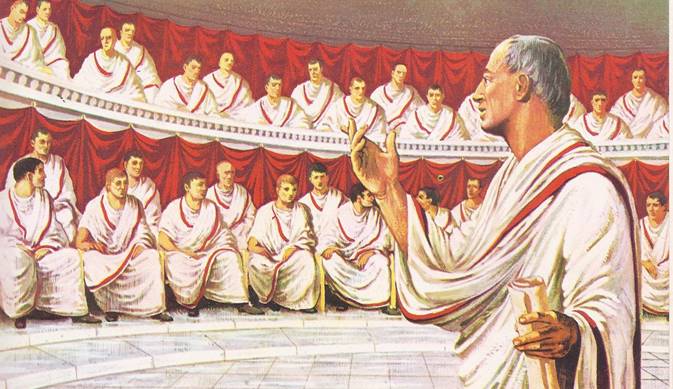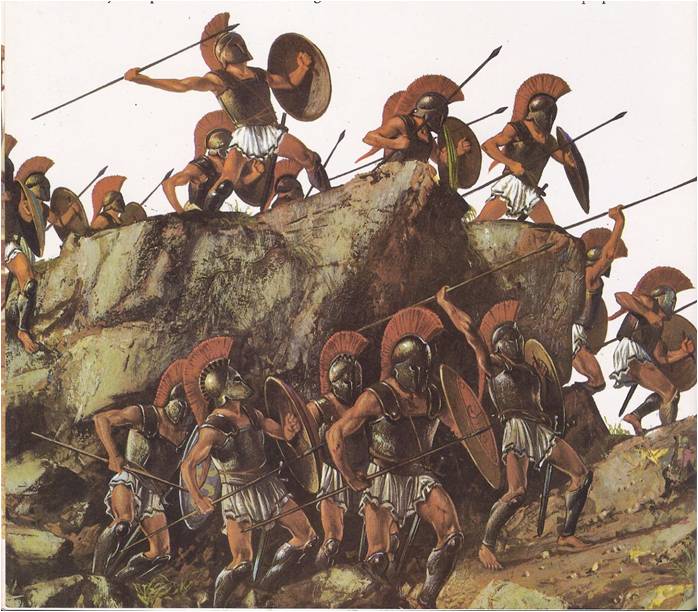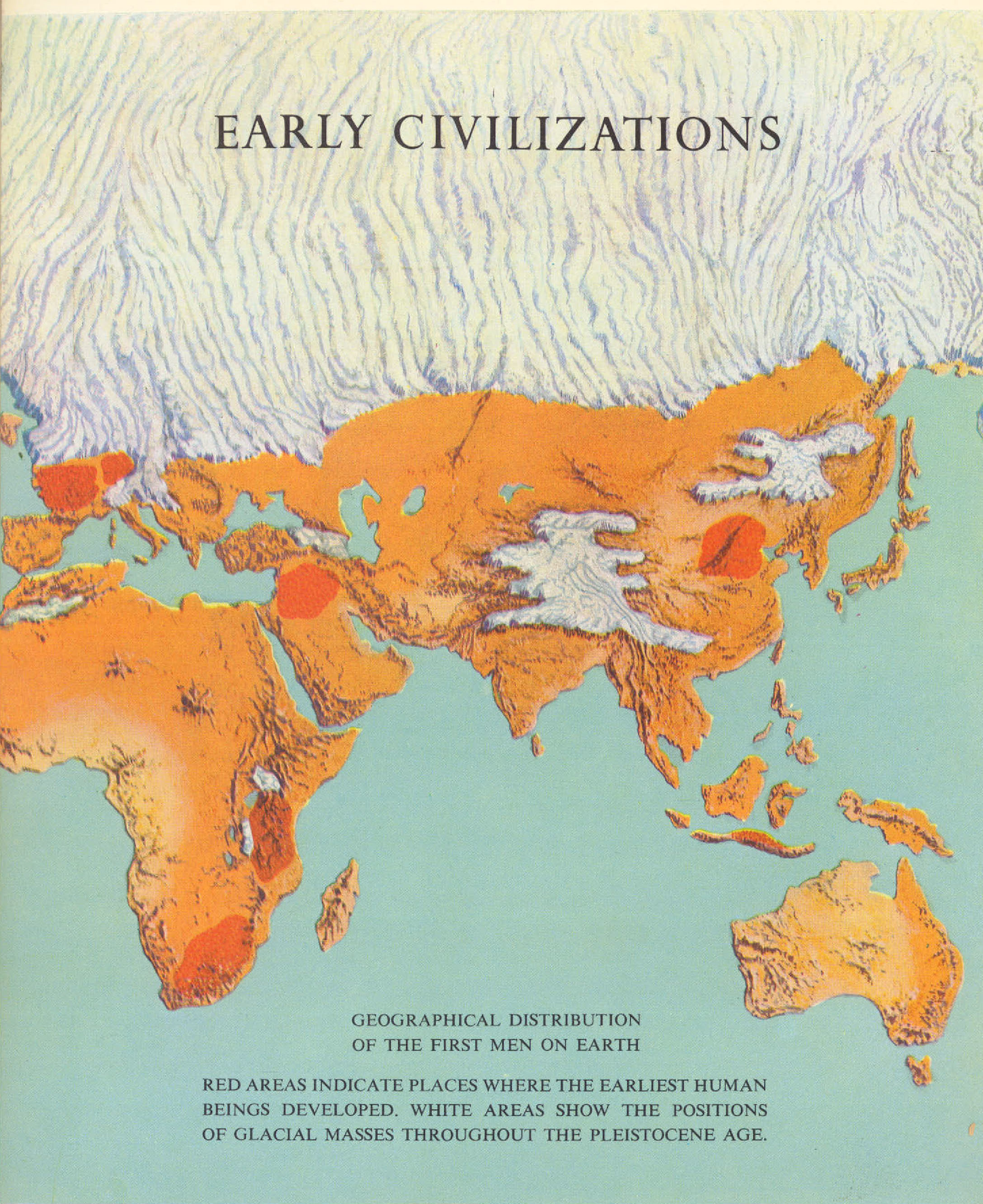MORE than two centuries before Aurungzeb’s death and even before the coming of Babur, a new kind of invader had appeared in India. Instead of thundering down on horseback from the Himalayan passes, he arrived on the coast by ship. Instead of plunder, he sought trade. Instead of wanting to conquer the subcontinent, he wanted to conquer the seas around it. This invader’s name was Vasco da Gama. He had sailed his small fleet all the way around Africa from his homeland of Portugal in southwest Europe. In 1498, just six years after Columbus discovered America, he landed at the South Indian port of Calicut. “Why have you come?” someone asked him. “For Christians and spices,” he replied. The captain’s brief answer summed up a great deal of history. Throughout the Middle Ages, Europe had depended on the East for Silk, precious stones and spices‚ such as cloves and — most prized of all — pepper. Supplies had come from India across Moslem territory. Deliveries had always been uncertain, but after the Turks took Constantinople in 1453, they became even more so. The Turks held up shipments and demanded money to let them pass. If this toll was paid, the price of the goods had to be raised. If it was not paid, the Turks would not allow the shipment to go through. Eastern goods became scarce in Europe and this sent the price still higher. It soon became plain that anyone who could bring the products of Asia directly to Europe would make a fortune. The Portuguese, as the foremost seafarers of Europe, were the first people to try to get around the Turkish blockade by setting up a sea route to India. There were other reasons, too, behind da Gama’s voyage. The pope and the European kings feared …
Read More »The Abbasids: Glory and Decay 750 -1258 A. D.
UNDER THE Omayyads, who ruled from 661 to 750, Islam had grown into a mighty empire. Arabic had become its language, while the Arabs, in turn, had picked up useful skills from the peoples they had conquered. The state had grown rich from the tribute paid by non-Moslems and the land tax paid by landowners. Though the caliphs were mainly concerned with pleasure and power, they had not neglected religion completely. They had built the Dome of the Rock in Jerusalem and the Omayyad Mosque in Damascus — two magnificent sanctuaries which were the holiest places in Islam after the Kaaba and the Medina mosque. The believers had become divided, as they would remain divided, into Sunnites and Shiites. Now it was the turn of the Abbasids, who were to rule over the eastern part of the Arab Empire from 750 to 1258. Their first century of power was the Golden Age of Islam. Of all thirty-seven Abbassid caliphs, three stand out above the rest: al-Mansur, Harun al-Raschid and al-Mamun. Although he reigned after his brother the Bloodshedder, al-Mansur (754-775) was the real founder of the dynasty. It was he who firmly established it in power. He crushed a rebellion of Shiites. He raided the border strongholds of the Byzantines. He appointed the first vizier, or chief advisor. This practice, copied from the courts of the Persian emperors, was carried on by all the caliphs who came after him. BAGHDAD AND ITS RULERS Al-Mansur’s greatest achievement was building Baghdad, the fabled city of The Arabian Nights. He himself chose the site on the banks of the Tigris. Constructed in four years by a hundred thousand architects and workmen, Baghdad became the imperial capital of the Abbasids. It also became one of the greatest centres of trade in the world. To …
Read More »Arabia, Mother of Religions 3000 B. C. – 570 A. D
ARABIA, the big, boot-shaped peninsula off the northeast corner of Africa, is one of the hottest and driest regions on earth. It is also extremely rugged. Almost all of it is made up of mountains‚ deserts and immense plains of sand broken by hills. Not a single river crosses it, only dry riverbeds called wadis which quickly carry away the little rain that falls. Water is so scarce that trees and plants can grow only along some of the coasts and in small “islands” of green called oases, mostly found in the wadis, which dot the vast interior. Yet this bleak‚ patched land was once the home of a people, the Semites, who gave the world much of its learning and three of its greatest religions: Judaism, Christianity and Islam. Thousands of years ago some Semitic tribesmen migrated north to the fertile region by the Mediterranean Sea. Over many generations they developed the principles of Judaism, the religion of the Jews. Much later Christianity also came into being there. Before the coming of the third great Semitic faith, Islam, Judaism and Christianity had long been established in Arabia. Most of the people still worshiped the sun, moon, stars and the spirits of hills, caves, rocks, springs and palm trees. They bowed down before the day idols of hundreds of gods, goddesses and demons. THE BEDOUINS Most Arabians were herdsmen called Bedouins. They roamed endlessly across the empty spaces, looking for water and grass for their camels, goats and sheep. They ate dates and a mixture of flour with water or goat’s milk and slept in tents woven from the hair of camels or goats. They wore flowing head-scarves and long shirts and went barefoot. They owned very little. A Bedouin’s most prized possessions were his camels and his sword. For …
Read More »Byzantine Glory A.D. 610-1057
The period from 610 to 717 was one of the darkest in Byzantine history. During that time, the edges of the empire crumbled under the pressure of powerful enemies. A people from northern Italy, the Lombards, conquered more than half of Italy. In central Arabia, the Arab tribes had joined together under the religion of Mohammed and marched against their neighbors. They took the kingdom of Persia, invaded Palestine and in 658 captured Jerusalem. The conquering Moslems, as the followers of Mohammed were called, swept on and soon took over Syria and Egypt. They marched along the northern shore of Africa and took Carthage in 697, then sailed across the Mediterranean and captured Spain. By this time the empire seemed all but doomed. It had been reduced to Asia Minor, the Balkan Peninsula and southern Italy. Shortly after Leo III had been crowned emperor he was forced to defend Constantinople during the Arab siege of 717-718. Later he drove them back on the Taurus front. After saving the empire from the Arabs, he organized the country into military districts and placed a military government over each of them. This system, together with Justinian’s fortresses, made the empire’s defenses stronger than ever before. The empire reached the height of its glory under Basil I and his descendants, a period lasting from 867 to 1057. Most of the emperors of this period were brilliant military leaders and good administrators. Under them the empire regained its strength, beat back the Arabs in South Italy and in the East forced the Arabs back to the Euphrates, overran Cilicia and Syria, and pushed down into Palestine to the gates of Jerusalem. On the European side, Basil II crushed the mighty empire of the Bulgars. DIPLOMACY AND TREACHERY Byzantine emperors often used treachery to weaken their …
Read More »The City Divided 130 B. C. – 70 B. C.
MARCUS TULLIUS CICERO, a young statesman known for his dramatic speeches, stood before a panel of judges in a courtroom in Rome. He stared at them angrily. For fifty days he had travelled through Sicily, collecting facts about the crimes committed by Caius Verres, the man who was on trial. Now the judges had told him that there would not be time to listen to his evidence. Cicero knew that the judges had been bribed. For it was no ordinary criminal that he meant to send to prison or to death. Caius Verres was an aristocrat and a senator and had served for three years as the governor of the province of Sicily. Verres’ lawyer was Hortensius, the leader of the aristocrats. Indeed, every rich or important man in Rome seemed to be supporting Verres, but Cicero was determined that this man should not escape judgment. He turned to Hortensius and offered to present his case in one day. “Would the court have time enough for that?” ‘ he asked sarcastically. Hortensius was surprised, but he smiled and told Cicero to try it if he liked. The judges agreed. For a moment there was silence in the courtroom, as Cicero turned to face the benches where the long lines of judges sat. Sternly he looked from man to man until he was certain all their eyes were on him. Then he began to speak. He listed Verres’ crimes: When he was governor and the commander of Rome’s army in Sicily, he had taken for himself the money raised to pay the troops. When he was governor and responsible for order and justice in the province, he had taken more money to allow pirates to rob the ports, to set criminals free and to condemn innocent men. For gold, he had …
Read More »The City of Aeneas 1000 B. C. – 500 B. C.
The minstrels who wandered from country to country in the ancient world told a legend of Aeneas, a Trojan prince. According to the story, Aeneas escaped the Greeks who broke through the walls of Troy and fled to his ships with a little band of warriors. Rowing out onto the Hellespont, they watched while a great fire destroyed their city and they knew that they could never return to Troy. Then, the storytellers said, the gods spoke to Aeneas, telling him to turn his ships west. They commanded him to sail away from the Hellespont and the Aegean Sea, past Crete and the country of the Greeks, into the unknown western ocean. There he would find a new land and build a new Troy, a mighty city that would conquer the Greeks and all the world. Aeneas obeyed the gods and sailed west; but before he came to the place where his new city would be built, he knew many years of adventure and hardship. A storm wrecked his ships on the coast of Africa, where he was found by Dido, the queen of a great city called Carthage. Dido took Aeneas to her palace and told her people to greet him like a prince. While he lived in the palace, waiting for new ships to be built, the queen fell in love with him. She begged him to give up his wandering and his dreams of a new Troy. She would make him king of Carthage, if only he would stay with her. When he refused, she killed herself, calling on the gods to grant her curse: “May Carthage and the city of Aeneas be enemies, make war on one another and live in hatred forever.” Aeneas sailed on, until he came to Italy and the ancient Greek city …
Read More »The Conquerors 343 B. C. – 323 B. C.
In 343 B. C., the philosopher Aristotle left the quiet of his study and journeyed to Macedonia, a country in the mountain wilderness north of Greece. He had been hired to tutor the rowdy young son of a king. The boy, Alexander, was a yellow-haired thirteen-year-old. His manners were polite and he seemed to be clever enough, but he was wild. It was hard for him to pay attention to his studies. He much preferred galloping across the fields on his huge horse. He proudly told his new tutor that he had tamed the horse himself. When he did come to his lessons, instead of discussing arithmetic and Greek grammar, he chatted on about armies and his father’s campaigns and his own great plans to conquer the world. Alexander said he was a descendant of the family of Achilles – his mother had told him so. The Iliad, Achilles’ story, was the one book he loved. He carried it with him wherever he went and read it over and over until he knew it by heart. He dreamed of growing up to be a hero like the ones in Homer’s poem. He pestered Aristotle with questions about Greece and Athens, which he longed to visit. Aristotle said that it was very different from Macedonia. Philip of Macedon In those days Macedonia was just beginning to be a kingdom that civilized people talked about seriously. The Greeks still said it was a country of barbarians, but the Greeks called everyone who wasn’t Greek a barbarian. Macedonia was changing. Alexander’s father, King Philip, had spent his youth as a hostage in Greece and he had learned to love almost everything Greek. He had studied the language and tried to learn the ways of the people; but he had also heard the Greeks …
Read More »Greek Against Greek 430 B. C. – 404 B. C.
About 425 B. C., a lonely man, in a country that was not his own, sat down to write the story of a war that had begun six years before. Thucydides, an Athenian, had fought in the war’s first battles. He had been a general, in command of thousands of his city’s troops. Then he was ordered to go to the aid of another commander whose men were outnumbered. When he arrived, the battle had already been fought and lost. It was not his fault but the people of Athens were too anxious about the war to consider that. They stripped Thucydides of his command and forced him to leave his homeland. Now, while the war raged on, he could only watch and he was troubled by the things he saw. Athens and its rival Sparta were caught in a deadly struggle to see which would be the master of the Greek world. Men died, cities were destroyed and nothing was gained, but the war went on. Thucydides began to write about the senseless fighting, hoping that he might teach the men of another time to avoid war. He wrote about the ambassadors from the city of Corinth, who spoke to the Spartans in their assembly, warning them about Athens. “You have no idea what kind of people these Athenians are”, the Corinthians said, “how altogether different from you. They are always thinking up new schemes and they are quick to make plans and to do something about them; but you are happy with what you have and slow to do even what is necessary. The Athenians are bold and adventurous; you Spartans are cautious and afraid to trust your own strength. They love foreign adventure, which you hate, because they think there is something to win, while you think …
Read More »The Coming of Man
About 400,000 years ago, a group of people were gathered at the mouth of a cave. They had a fire in which they were roasting deer meat and around them lay the bones of monkeys, wild pigs and water buffalo from previous meals. One of the women was picking berries from the nearby bushes. A man sitting close to the fire chipped away at a broken stone he would use to cut off chunks of the cooked meat. Another man, too hungry to wait, gnawed the marrow from some bones. The cave was one of several not far from what is now Peking, China and the people who first used these caves are known as Peking Man. Peking Man did not leave anything behind except some bones, charcoal, berries and stones, but these are enough to suggest certain things about the way he lived. They show that the people at the caves ate meat as well as plants, made crude tools, could kill large animals and knew how to keep a fire alive. With fire they could keep warm and fend off wild animals at night. Probably they cooked some foods in the fire. Instead of eating in the fields after killing an animal, the men might wait until they gathered around the fire to eat. Such a meal became something of a family or group occasion. There was a sharing of tasks, of food, of pleasures. No one said much, but with simple language the adults could pass on something of what they had learned to their children. At times, when food was scarce these people may have eaten human flesh, but it is likely they killed only to survive. Or perhaps they believed by eating human flesh they could obtain the strength of a slain enemy, or keep …
Read More »








